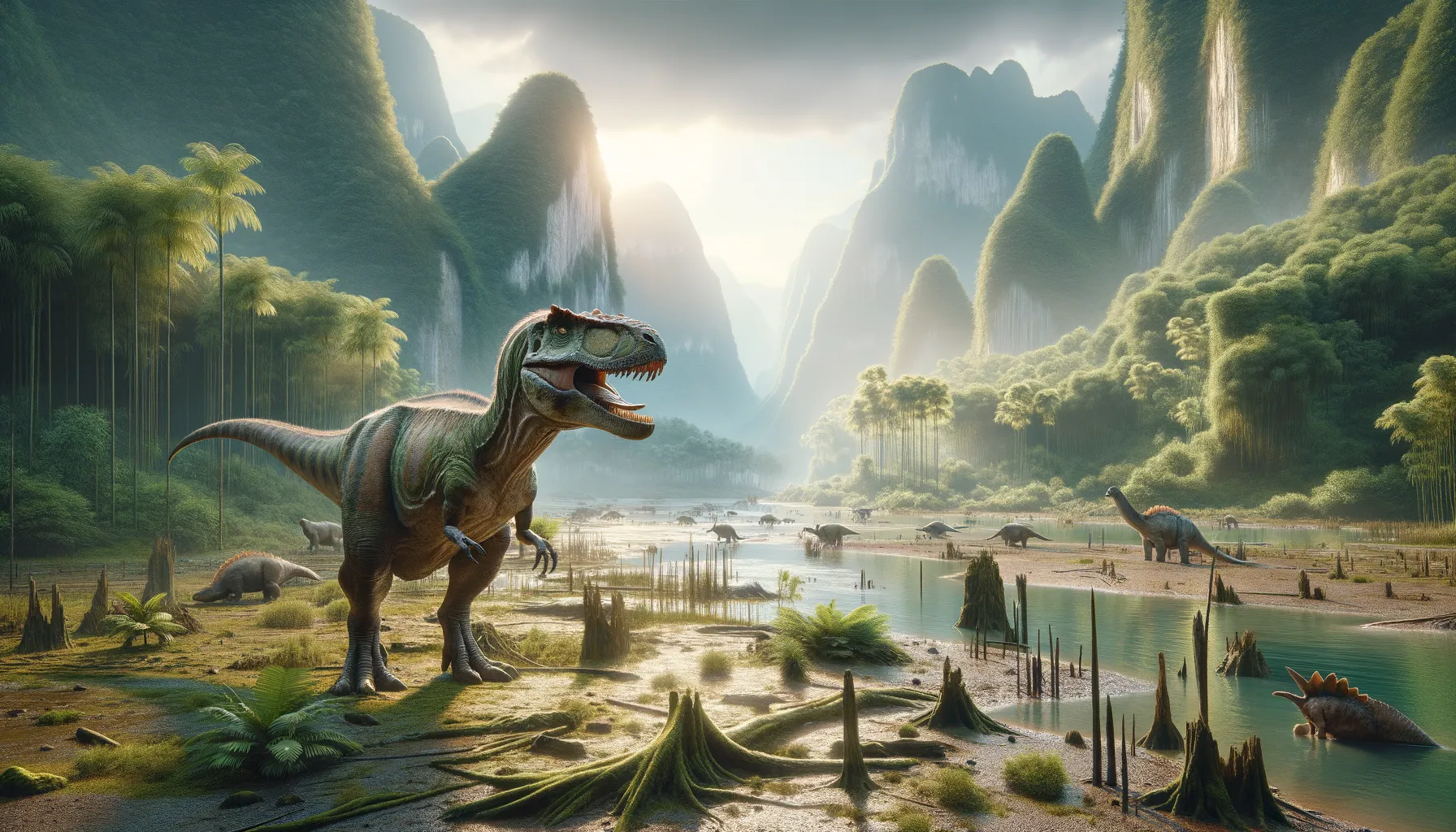
Zuoyunlong
A giant of the prehistoric floodplains.
Period
Cretaceous
Length
Up to 30 feet long.
Height
Around 10 feet tall.
Weight
Approximately 2.5 tons.
Zuoyunlong was a genus of hadrosauroid dinosaur from the Late Cretaceous period, discovered in Shanxi Province, China. As a herbivore, it roamed ancient floodplains, feeding on the lush vegetation. Its discovery has added crucial insight into the diversity and distribution of hadrosauroid dinosaurs in Asia. With its notable size and distinctive jaw structure, Zuoyunlong highlights the adaptability and evolutionary success of herbivorous dinosaurs.
Diet
Zuoyunlong was a herbivore, primarily consuming plant material like conifer needles and cycads. It likely had a beak adapted for cropping vegetation and teeth suited for grinding tough plant matter.
Hunting
Zuoyunlong did not hunt, as it was a plant-eating dinosaur. Instead, it likely foraged across its habitat using its strong beak to crop leaves and other plant material.
Environmental challenges
Living in a floodplain environment, Zuoyunlong faced challenges like seasonal flooding, which could alter available food sources. Predation by large carnivorous dinosaurs might have been a concern, encouraging them to stay in herds. Climatic shifts during the Cretaceous would have affected vegetation growth and availability, influencing their migratory or feeding patterns.
Speed
Moderate, likely on par with other hadrosaurs.
Lifespan
Estimated to live several decades.
First discovery
Discovered in China in 2015.
Fun Facts
- Zuoyunlong was discovered in the Shanxi Province of China, adding to our knowledge of dinosaurs from Asia.
- This dinosaur lived during the Early Cretaceous period, about 125 million years ago.
- Zuoyunlong is known from a single fossil specimen, but it provides valuable insights into the evolutionary history of iguanodontian dinosaurs.
- Its name, 'Zuoyunlong', means 'Zuoyun dragon', named after the region where it was found.
- Zuoyunlong is believed to have been a herbivorous dinosaur, munching on plants and vegetation in its habitat.
- The discovery of Zuoyunlong helps researchers understand more about the distribution and diversity of dinosaurs in the Early Cretaceous era.
- Although not the largest dinosaur, Zuoyunlong contributed important pieces to the puzzle of dinosaur evolution.
Growth and Development
Zuoyunlong likely hatched from eggs and grew rapidly, as is common among dinosaurs. Its growth might have been dependent on food abundance, with juveniles needing to grow quickly to evade predators. Morphological changes during development may have included changes in skeletal structure to support increasing weight.
Habitat
Zuoyunlong inhabited floodplains, rich with rivers and lush vegetation offering an abundant food supply. The landscape provided plenty of space for large herbivores to roam and feed. It likely shared its habitat with other herbivorous dinosaurs, as well as predators.
Interaction with other species
As a herbivore, Zuoyunlong likely interacted peacefully with other plant-eaters in its environment. However, it may have been wary of nearby predators. Within its species, it might have lived in groups for protection and social interaction, suggesting potential mutual assistance against threats.
Natural lifespan
Its natural lifespan is estimated to be several decades.
Reproduction
Like other dinosaurs, Zuoyunlong likely laid eggs in secure nesting sites. Parental care, if any, is unknown, but some level of nest protection or group nesting may have occurred. Young Zuoyunlongs would have been vulnerable to predation and dependent on suitable habitats for growth.
Social behaviour
Zuoyunlong might have moved in groups, which would offer protection against predators. Social structures in hadrosauroids could involve complex interactions and cooperation. Herd behavior may have also supported foraging efficiency.
Fossil locations
Zuoyunlong fossils were discovered in Shanxi Province, China. These finds contribute to understanding the distribution of hadrosauroids in Asia. The discovery was made in sediment layers indicating a Late Cretaceous origin.
